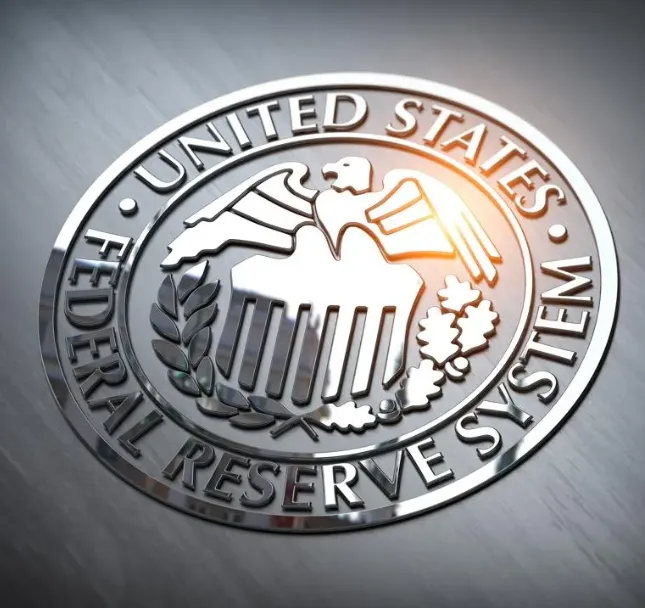The Federal Reserve’s recent decision to keep interest rates between 4.25% and 4.5% has far-reaching consequences not just for traditional markets, but also for the cryptocurrency ecosystem. With inflation still sticky and growth slowing, the Fed’s “higher-for-longer” stance has created a cautious environment for digital assets, venture capital, and startups navigating uncertain conditions.
Why Fed Decisions Matter to Crypto
Interest rates are a fundamental driver of capital flows. When borrowing is cheap, investors tend to allocate more toward riskier assets like crypto. Conversely, higher rates make capital expensive, reducing liquidity for speculative tokens and startups. The Fed’s decision to hold rates steady underscores its delicate balancing act—fighting inflation while trying not to suffocate economic growth.
Cryptocurrencies often mirror these shifts in policy. Bitcoin and Ethereum typically weather tighter liquidity better than smaller tokens, which rely heavily on speculative capital. In fact, prolonged high rates often push institutional investors to favor Bitcoin as a relatively “safer” digital asset compared to altcoins.
Market Reaction to the Fed’s June 2025 Announcement
When the Federal Open Market Committee confirmed its decision to keep rates unchanged in June, the reaction across crypto markets was restrained. Bitcoin initially traded around $105,000 before climbing above $119,000, while Ethereum hovered near $2,500. These moves reflected muted optimism, as investors had already priced in the Fed’s cautious stance.
The bigger impact came from the Fed’s updated forecasts, which signaled fewer expected rate cuts this year. That adjustment introduced fresh uncertainty for smaller-cap tokens, DeFi projects, and other segments of the crypto market that depend more on abundant liquidity.
A Look Back: Crypto’s History with Fed Policy
Cryptocurrency markets have repeatedly shown sensitivity to shifts in U.S. monetary policy:
- In 2018, a steady increase in rates coincided with Bitcoin’s 80% drop during the “crypto winter.”
- In 2020, emergency cuts during the pandemic helped fuel one of the largest rallies in Bitcoin’s history.
- By late 2021 and into 2022, aggressive hikes and hawkish commentary triggered steep declines, with Bitcoin falling from $60,000 to under $20,000.
- When the Fed paused hikes in early 2023, Bitcoin surged again, showing how closely rate policy and crypto valuations are linked.
Today, Bitcoin trades near $117,000 after recently hitting an all-time high of $123,000. Many analysts believe even a hint of future rate cuts could provide the momentum for another wave of record-breaking rallies.
What Founders Need to Know
For startup leaders—especially in crypto and blockchain—Federal Reserve policy is not just background noise; it directly affects fundraising and growth strategies. Rising rates increase the cost of debt and tighten venture capital flows, often leading to compressed valuations. Research shows that even a 1% rise in interest rates can cut annual venture capital fundraising by more than 3%.
For founders and CFOs, this means two things:
- Timing Matters: Securing funding before additional hikes can help preserve valuations.
- Efficiency Is Key: Investors are increasingly focused on burn rates, profitability timelines, and operational discipline.
Diversifying funding sources has also become essential. Beyond traditional VC, founders should consider token launches, DAO funding rounds, or ecosystem grants—though each comes with regulatory and governance trade-offs. Building strong investor relationships early and maintaining transparent financial practices can also give startups an edge when capital is scarce.
What Lies Ahead for Crypto
Looking forward, the crypto market faces a mixed outlook:
- Near-Term Outlook: High rates will likely keep capital tight, favoring Bitcoin and yield-generating assets over speculative altcoins.
- Potential Rate Cuts: If inflation softens, rate reductions later in 2025 could inject fresh liquidity, setting the stage for renewed rallies.
- Policy and Regulation: U.S. fiscal policies, global conflicts, and evolving regulatory frameworks will play a significant role in shaping investor confidence.
- Sector Trends: DeFi protocols and real-world asset integrations may adapt by aligning yields with traditional finance benchmarks, while infrastructure projects demonstrating resilience may attract long-term funding.
Fed Chair Jerome Powell’s guidance remains a focal point for traders and founders alike. With fewer cuts on the horizon and lingering inflation, the environment favors caution over exuberance. Yet, in crypto, even small shifts in policy can unleash major volatility—providing opportunities for well-prepared investors and resilient startups to thrive.







